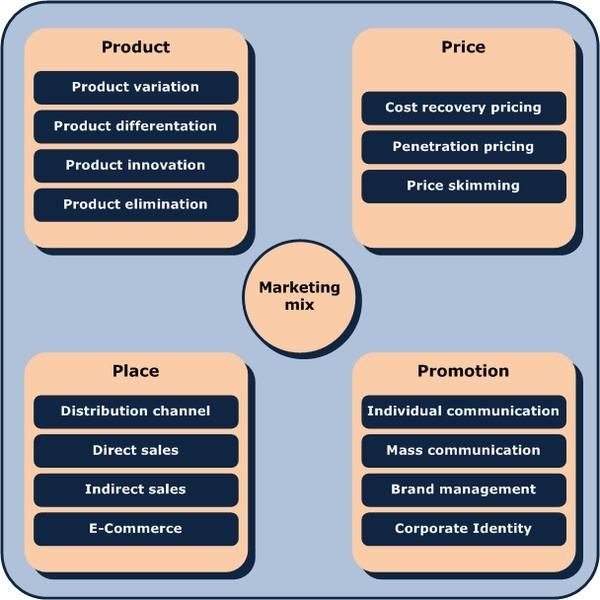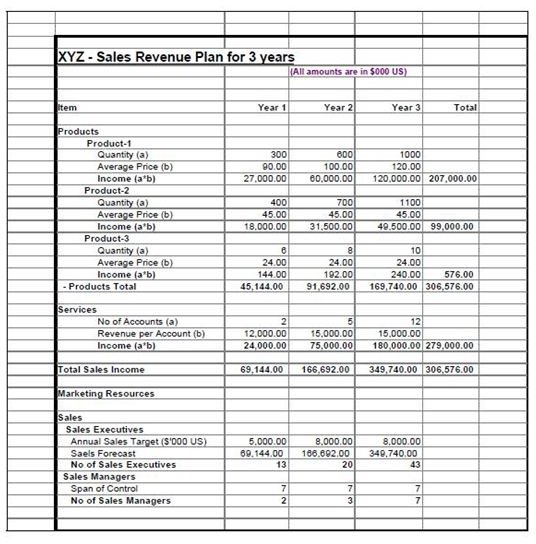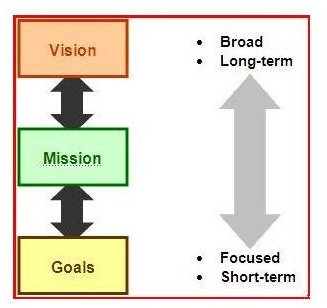The Small Business Marketing Plan Format
Vision, Mission, Goals, and Business Model
We again go back to our intuitive process for understanding the jargon used while developing small business marketing ideas and translating them into a formal business model. Once an entrepreneur has decided to start a business, (s)he already has a mental picture of what (s)he wants to achieve from a long-term perspective.The mental picture also defines in broad terms how the business will operate and how it will benefit the entrepreneur, the society, the government, and other stakeholders. This broad mental picture is what is stated as the <strong>Vision</strong> of a business, and the purpose behind this Vision is what is called the <strong>Mission Statement</strong> of the business.
The Business Model, in a macro sense, is the framework you intend to use in order to create value to the stakeholders in line with your Vision and Mission. And in micro terms, the Business Model constitutes how your business will generate revenue, what products and services you plan to provide to your intended market, how will these products and services reach your clients, and how will you source your inputs - the entire supply chain. It is at this stage that you need to spell out the specific Goals your business will achieve.
Thus, the very first component of your Business Plan will spell out your Mission and Vision, the short-term Goals, and the Business Model you propose to achieve your Goals. For example, the Business Models used by a manufacturer and a distributor or retailer are different from each other. The Business Models used by Microsoft and by Red Hat are entirely different, in delivering operating systems (Windows and Linux) to computer users. Think about the differences, and the concept of a Business Model will be very clear.
Writing out the Marketing Plan
Intuitively, it must be clear to you that the Business Model developed by you needs to be driven by a plan for taking your product-service mix to the market. This plan is what we call the Small Business Marketing Plan. So, how do you crystallize this plan and put it down in writing?
Let us start with the basic components of a marketing mix. If you know about Philip Kotler’s 4 Ps of Marketing, well and good, but if you don’t there is no reason to panic. It is basically what you would have thought about intuitively. The small business marketing ideas will lead you the defining these 4 Ps:

Product Plan - What products and/or services are you planning to market? How much (quantity) will you sell during the next three years?
<strong>Pricing</strong> Plan - How will you price your product / service? Will you price it at a premium to the competition, or will you skim the market
Place Plan - Where will you be selling your products and services? What channels of distribution will you use? How much will that cost? What are the benefits?
Promotion Plan - How will you promote your product/service in order to sustain the product and pricing plans? What mix of advertising media, marketing collaterals, promotional events? And how much will these cost?
Answers to all these questions will give you the first step in your small business marketing ideas - what is traditionally referred to as the marketing strategy, again something you have already thought about in your mind, right? Once your base ideas are clear, you are ready to now determine what kind of a marketing organization you need to achieve your small business marketing ideas. This is what leads to your small business marketing plan. It will be a good idea to back up your answers with some market research and follow an appropriate template for putting down the figures while computing the marketing organization and the resources you need to achieve the plan. For cases like these, a software application like Business Plan Pro can be a big help.
The Small Business Marketing Plan Format
For putting the figures down to calculate the resource requirement against the sales revenues you have projected, we will use a simple intuitive format. As you will notice in the sample Small Business Marketing Plan Format, you prepare a table with rows and columns (this sample has been prepared in MS-Excel). We prepare the projections for three years: Year 1, Year 2, and

Year 3. First task is to forecast the sales quantities you expect to achieve for each product in the three years. Then put down the expected average price. With this you get the forecast sales revenue from Product-1.
Repeat this step for all product and services, and you get the total sales income for three years. Now to derive the sales force required, you first need to decide on a target you would like to set for your sales executives for each year. Since you know the forecast sales figures, you can derive the number of sales executives for each year (by dividing the sales income by the target per sales executive). Thus you get the number of sales executives (13, 20 and 43 in Year 1,2 and 3 in the sample Small Business Marketing Plan Format).
Next you need to estimate the number of sales managers to supervise and manage these sales executives. Generally, you assume that 1 manager is needed to control 7 executives (also referred to as span of control). Thus we have the number of sales managers in the last row of the sample plan.
Thus you are now ready with the Small Business Marketing Plan Format for Sales Revenues and the resources required for sales. Adding the support staff for marketing, and the marketing expenses for promotion, and other overheads like travel will give you the total picture of gross income and the selling expenses.
Conclusion
In summary, therefore, we have now seen how intuitively you can write out the Vision, Mission and Goals for your business, and using the goals set by yourself for three years, how the small business marketing ideas evolve in the form of the product-service mix. Using the marketing mix and the marketing strategy adopted, we have seen how the three year sales forecasts can be drawn up, and from there how the sales resources can be derived, giving you the entire groundwork for your small business marketing plan. In the next two parts of this series, we will visit the other components for writing the business plan.
This post is part of the series: Writing a Business Plan: Step by Step
This series will walk the reader through the steps involved in writing a detailed business plan. The guides have been written using the natural intuitive thinking approach, so that the entrepreneur realizes the structure behind the written plan, and appreciates its value.
- Writing a Business Plan - Simplified
- Business Model and Marketing Plan Components of a Business Plan
- Manpower and Capital Expenditure Components of a Business Plan
- Writing a Business Plan (Part 4): Projected Profit and Loss Statement and Balance Sheet
- Writing a Business Plan (Part 5): Cash Flow Projections and Ratio Analysis
